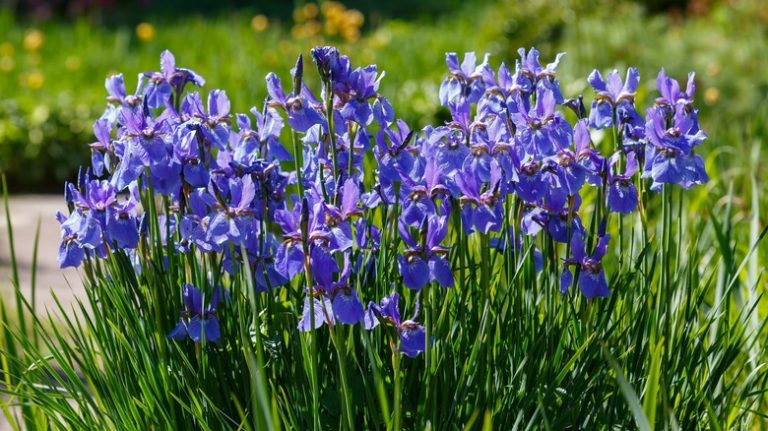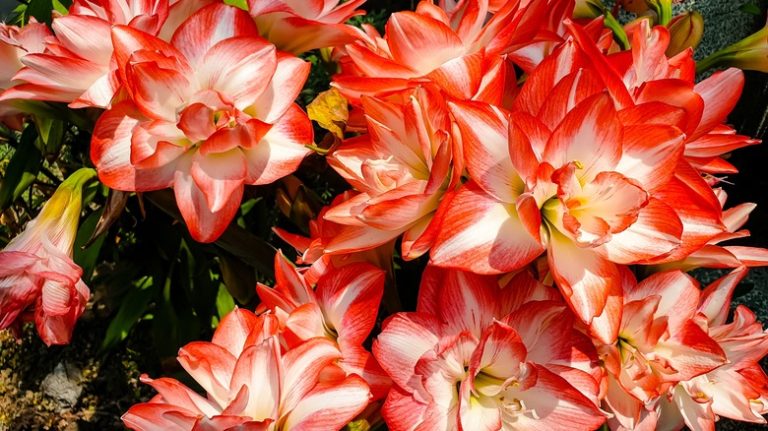If you’re looking for a unique and eye-catching plant to add to your garden, consider cupheas. These plants, also known as bat-faced plants, have upward-facing flowers that spread out like a bat’s face. Cupheas come in a variety of sizes, colors, and hardiness zones, making them suitable for gardens across the world.
When it comes to growing cupheas, they are relatively easy to care for. They can be grown as annuals or perennials, depending on your hardiness zone. Cupheas are usually started from seed and can be planted in late spring or early summer. They typically reach a height of 1 to 3 feet and spread about 1 to 2 feet wide.
One popular variety of cuphea is the bat-faced llavea, which is available in vibrant colors like redburgundy. These plants have attractive foliage and flower throughout the summer and into the winter months. Cupheas are known for their tolerance of heat and drought, making them suitable for gardens in warmer climates. They also tolerate some shade, although they will flower best in full sun.
For those living in USDA hardiness zones 8b and above, cupheas can be grown as perennials and will come back year after year. In colder climates, they can be grown as annuals or brought indoors for the winter. Cupheas can be propagated from seeds or cuttings, making them a great plant for beginners looking to try their hand at plant propagation. These plants also have excellent weed-suppressing qualities, allowing them to fill in empty spaces in your garden.
In recent years, cupheas have gained popularity due to their unique and intriguing flowers. From their bat-faced appearance to their vibrant colors, cupheas add a touch of whimsy and beauty to any garden. So, if you’re looking for a plant that is both easy to care for and visually stunning, look no further than cupheas.
Cuphea Bat Face
Cuphea Bat Face, also known as Cuphea llavea, is a unique plant with beautiful bat-like flowers. These plants are native to Mexico and have become popular in gardens around the world due to their striking appearance and low maintenance requirements.
The leaves of the Cuphea Bat Face are full and glossy, providing an attractive backdrop for the flowers. The plant can grow up to 2 feet in height and has a spread of 1 foot, making it suitable for small gardens and containers. It is hardy in USDA zones 8b to 11 and can tolerate both full sun and partial shade.
The flowering season for Cuphea Bat Face starts in late summer and continues until the first frost. The flowers are about an inch long and have a unique shape, resembling a cigar with a bat-like face facing upward. The colors range from red and burgundy to pink and white, adding a splash of color to any garden.
Cuphea Bat Face plants are easy to grow and care for. They can be started from both seeds and cuttings, with seeds being readily available from local nurseries or online. The plants are annuals, meaning they have a lifespan of one year, but they may self-seed and return in subsequent years.
When planting Cuphea Bat Face, space them about a foot apart to allow for their spreading growth habit. They prefer well-drained soil and should be watered regularly, especially during dry periods. Fertilize them with a balanced, slow-release fertilizer to promote healthy growth.
In colder climates, Cuphea Bat Face can be grown indoors as a houseplant during the winter months. Place them in a sunny window and make sure to water them regularly, allowing the top inch of soil to dry out before watering again.
Cuphea Bat Face plants have several attributes that make them a valuable addition to any garden. They are drought tolerant and attract pollinators such as butterflies and hummingbirds. They also have a high resistance to pests and diseases, making them relatively low maintenance compared to other perennials.
In recent years, Cuphea Bat Face has gained popularity due to its unique characteristics and eye-catching flowers. Whether grown in gardens or containers, these plants are sure to add interest and color to any space.
Flower Color
Cuphea plants, also known as Bat-Faced plants, are known for their unique and eye-catching flower colors. The flowers of Cuphea plants come in a wide range of vibrant and attractive hues, adding a pop of color to any garden.
One popular flower color found in Cuphea plants is redburgundy. This deep red color is striking and can easily catch the eye. The red flowers stand out against the deep green foliage, creating a beautiful contrast. Another common flower color is pink, which adds a soft and delicate touch to the garden. Cuphea plants can also have flowers in shades of white, purple, and lavender.
When growing Cuphea plants, it’s important to choose a flower color that complements the other plants in your garden. Consider the overall color scheme and choose Cuphea plants with flowers that will harmonize with the rest of your plants.
Additionally, the flower color of Cuphea plants can also attract certain pollinators, such as butterflies and hummingbirds. The vibrant hues of the flowers act as a beacon, drawing these pollinators to your garden. This can be especially beneficial for the overall health and biodiversity of your garden.
Cuphea plants are available in both annual and perennial varieties, so you can choose the flower color that suits your preference. Annual Cuphea plants will need to be replanted each year, while perennial Cuphea plants will come back year after year. Consider the growing conditions in your area and choose the appropriate type of Cuphea plant for your garden.
Depending on the specific cultivar, Cuphea plants can range in height from 10 inches to 3 feet, with a spread of 1-2 feet. This makes them suitable for both small and large gardens, as well as container gardening. Cuphea plants are relatively low-maintenance and can tolerate a variety of growing conditions, including full sun to partial shade.
The flower color of Cuphea plants can also vary depending on the season and the resources available. In warmer climates, Cuphea plants may flower continuously throughout the summer, while in cooler climates, they may have shorter flowering periods. The flower color can also change as the plant ages and matures.
Overall, the flower color of Cuphea plants is one of their most attractive attributes. Whether you choose a red, pink, white, or purple flower color, Cuphea plants are sure to add beauty and visual interest to your garden.
Height
The height of bat-faced cuphea plants can vary depending on growing conditions and care. On average, these plants can reach a height of 1 to 3 feet. However, some varieties can grow taller, reaching up to 6 feet in optimal conditions.
Bat-faced cuphea plants are perennials in zones 8b and above, but they are grown as annuals in colder zones where winter temperatures dip too low for them to survive. In colder zones, it is recommended to start bat-faced cuphea from seed indoors in late winter or early spring and transplant them outdoors after the last frost. They can be planted in full sun or partial shade.
These plants have a spreading growth habit and will develop multiple stems that branch upward. The leaves of bat-faced cuphea are lance-shaped and have a dark green color. The plants produce small tubular flowers that are typically red or burgundy in color, hence the name “bat-faced.” The flowers bloom from late spring through summer, attracting pollinators such as butterflies and hummingbirds.
When caring for bat-faced cuphea plants, it is important to provide them with well-draining soil and regular watering. They are tolerant of dry conditions, but consistent moisture will help promote healthy growth and flowering. These plants are also relatively pest and disease-free, making them easy to grow and maintain.
In addition to their attractive flowers, bat-faced cuphea plants have other desirable attributes. They have a long flowering season, providing color and interest in the garden for many months. They also have a compact growth habit, making them suitable for small gardens or containers. Their foliage is also attractive, with dark green leaves that contrast nicely with the vibrant flowers.
Propagation of bat-faced cuphea can be done through seeds or cuttings. Collecting seeds from mature flowers and sowing them directly in the garden or starting them indoors is a common method. Stem cuttings can also be taken and rooted in a well-draining soil mix to grow new plants.
Overall, bat-faced cuphea plants are a valuable addition to any garden. Their unique flower shape and interesting foliage make them stand out, while their easy care requirements and long flowering season make them a favorite among gardeners. Whether planted in borders, containers, or hanging baskets, bat-faced cuphea plants are sure to provide beauty and enjoyment for years to come.
Spread
When it comes to the spread of bat-faced plants, Cupheas have some unique characteristics. These plants can spread both horizontally and vertically, making them a great choice for filling in spaces in your garden.
One way to spread Cupheas is through planting. They can be grown as perennials in zones 8b and above, or as annuals in colder zones. They prefer full sun, but can also tolerate some shade. Cupheas are known for their flowering attributes, with blooms available in a range of colors from red and burgundy to yellow and purple.
In regards to their spread, Cupheas can reach a height of up to 3 feet and spread outwards by as much as 2 feet. They have a bushy growth habit, with leaves that are lance-shaped and pointed at the tip. These plants also produce small cigar-shaped flowers that resemble a bat’s face, giving them their unique name.
For those looking to grow Cupheas indoors, it’s important to note that they prefer warm temperatures. They can be grown from seed or propagated from cuttings taken in late summer. Cupheas can be a bit more complicated to grow and care for compared to other plants, but their unique characteristics make them worth the effort.
When it comes to spreading Cupheas in your garden, they can be planted directly in the ground or in containers. Space them about 2 feet apart to allow for proper growth and spread. If you have limited space, you can also grow Cupheas in hanging baskets or containers on a patio or balcony.
In terms of caring for Cupheas, they require well-draining soil and regular watering. Prune them back in late winter or early spring to promote new growth and maintain their shape. Cupheas are considered low-maintenance plants and rarely face any major pest or disease issues.
In recent years, Cupheas have gained popularity in gardens for their unique color and flowering characteristics. Their ability to spread both upward and outward makes them a versatile addition to any garden or landscape. Whether you’re looking for a pop of color or a unique focal point, Cupheas are a great choice.
So if you’re looking to add some bat-faced plants to your garden, consider the spread and growing attributes of Cupheas. With their unique bat-face flowers and attractive foliage, they are sure to add value and interest to your outdoor space.

